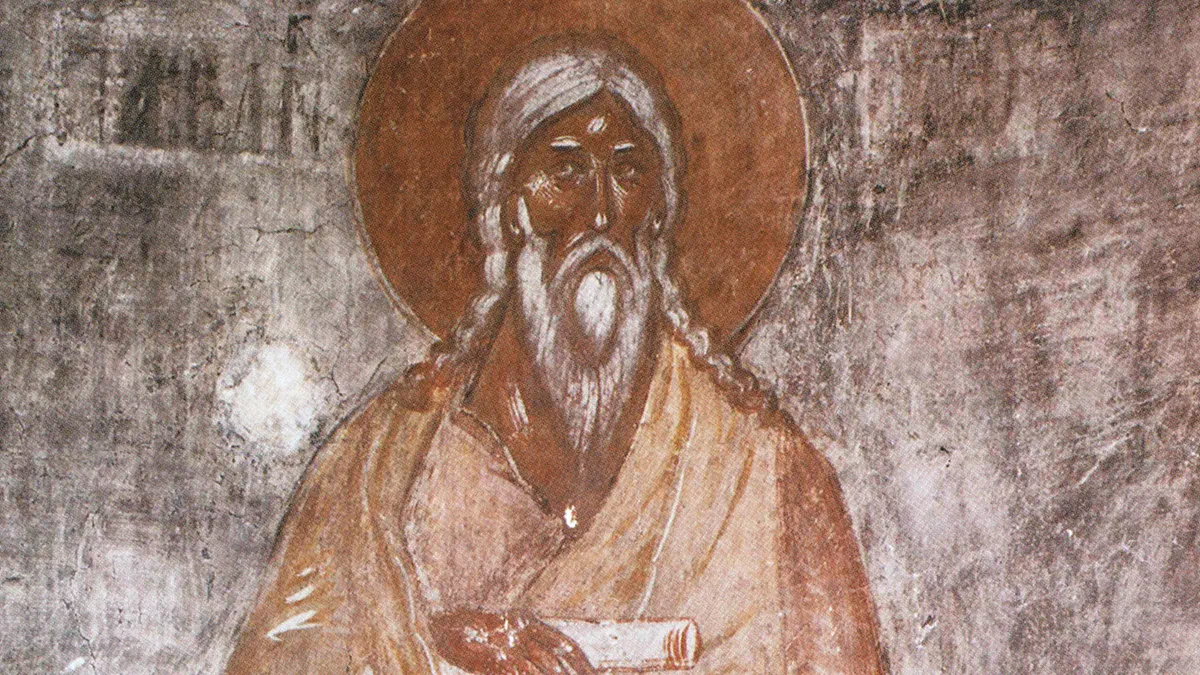The first pages of Genesis contain a rift that will echo through the whole of Scripture and the secret traditions born around it. Expelled from the garden, Adam begets three figures who carry in themselves three different paths of humanity. Cain, the cultivator of the soil, violent and restless. Abel, the fragile shepherd, whose life vanishes in blood. Seth, the one placed by Divine concession, seed of a new line.
These are not merely characters of a distant myth, but rather mirrors of the human condition, signs carved into the body of history. Their tension anticipates the vertical and horizontal beams of the Cross. In Cain and Abel the arms stretch outward in division; in Seth a vertical axis begins to rise, preparing the place where Logos would later reconcile heaven and earth. The triad of brothers becomes more than a family tale. It is the primordial icon of matter, soul, and Spirit, destined to find unity in the Tree that heals.
I. Cain and the Weight of the Earth
Cain is the firstborn, the one who tills the soil and offers its fruits. But his gift is not received with favour. Out of resentment he kills his brother and carries forever the mark of a wanderer. The texts present him as founder of cities, ancestor of artisans, forgers of metal, and makers of instruments. In this sense Cain inaugurates civilisation. He binds man to the ground, to productivity, to the restless desire for recognition. He is the image of a human will that clings to the earth with excess of force, seeking merit before the Divine through toil. He represents the column of severity in the Tree of Life, the pole of restriction and judgement. He is aligned with the material and hylikoi nature of the human being.
The violence of Cain does not lie only in the murder of Abel but also in the foundation of human works upon blood. The city built by his descendants is a mirror of progress tainted with guilt. When we walk under Cain’s mark, we carry the heaviness of matter, the strain of achievement that breeds rivalry. He corresponds to those fixed in the material realm of Assiah, bound to the Demiurge, unable to lift the gaze beyond the soil they plough. He is the shadow of civilisation itself, necessary but wounded, the left arm of the Cross stretched outward with severity.
II. Abel and the Breath of Innocence
Abel appears as the opposite. His name in Hebrew, Hevel, means breath, vapour, vanity. His offering is received, but his life ends almost before it begins. He is the innocent slain, the first martyr. His story is brief and delicate, filled with absence. In him lies the fragility of the just, whose existence vanishes like smoke before the weight of his brother’s envy. His life is given rather than constructed.
Abel represents the column of mercy in the Tree, the pole of expansion and grace. He is the figure of soul more than of body, aligned with the psychikoi of the gnosis. He lives by devotion, by the rhythm of offering, but his condition remains transient. He reveals the beauty of innocence but lacks the root of permanence. Abel is beloved but fragile, a reflection of the right arm of the Cross. His death becomes a prefiguration of Christ, the innocent lamb who falls under violence. However, unlike Christ, Abel remains in the grave, waiting for a fulfilment greater than himself. His fragility calls for completion through another seed.
III. Seth and the Column of Balance
After blood has cried from the ground and the family is broken, Adam receives a third son. Seth, whose name means “appointed” or “placed”, is given as replacement. In him the narrative turns towards a new beginning. He becomes ancestor of the righteous line, leading through generations to Noah and, in the fullness of time, to Christ. Seth is more than genealogical continuity. He is the principle of equilibrium. Where Cain drags man downward into matter and Abel dissolves like a breath, Seth stands as axis.
In the vision of the Cabalists, the Tree of Life rises upon three pillars: severity on the left, mercy on the right, and equilibrium at the centre. Seth embodies the central column. He reconciles the extremes, holding within himself the seed of Spirit that unites earth and breath. He points towards Tifereth, the solar heart of the Tree, the place where opposites are balanced in beauty. In the gnosis, he corresponds to the pneumatikoi, the spiritual race, carriers of the hidden spark. In some currents, Seth even ascends beyond history to become an aeon, archetype of the redeemed humanity.
This central role of Seth anticipates the Cross. The vertical beam of the Cross is the continuation of Seth’s column, binding heaven and earth. Cain and Abel stretch horizontally, divided by opposition; Seth rises vertically, reconciling. At the intersection stands Christ, fulfilment of the line. Where Abel was victim, Christ is victorious victim; where Cain was city-builder, Christ founds the heavenly city; where Seth was deposit of promise, Christ is the oil of mercy poured upon all. The Tree lost in Eden becomes the Tree restored on Calvary. The fruit forbidden becomes body given. The oil withheld from Adam is released through the wound of the side.
The three brothers, read through the lens of hermetic and gnostic wisdom, are permanent archetypes. Cain shows the weight of matter, Abel the fragility of soul, Seth the seed of Spirit. Their drama unfolds again in each human life, in each civilisation, in each inner conflict. And their resolution lies only in the Cross, where the horizontal of division is embraced by the vertical of union, where Tifereth becomes Logos, and where the oil of mercy flows at last upon Adam’s descendants.
Κύριε ελέησον
